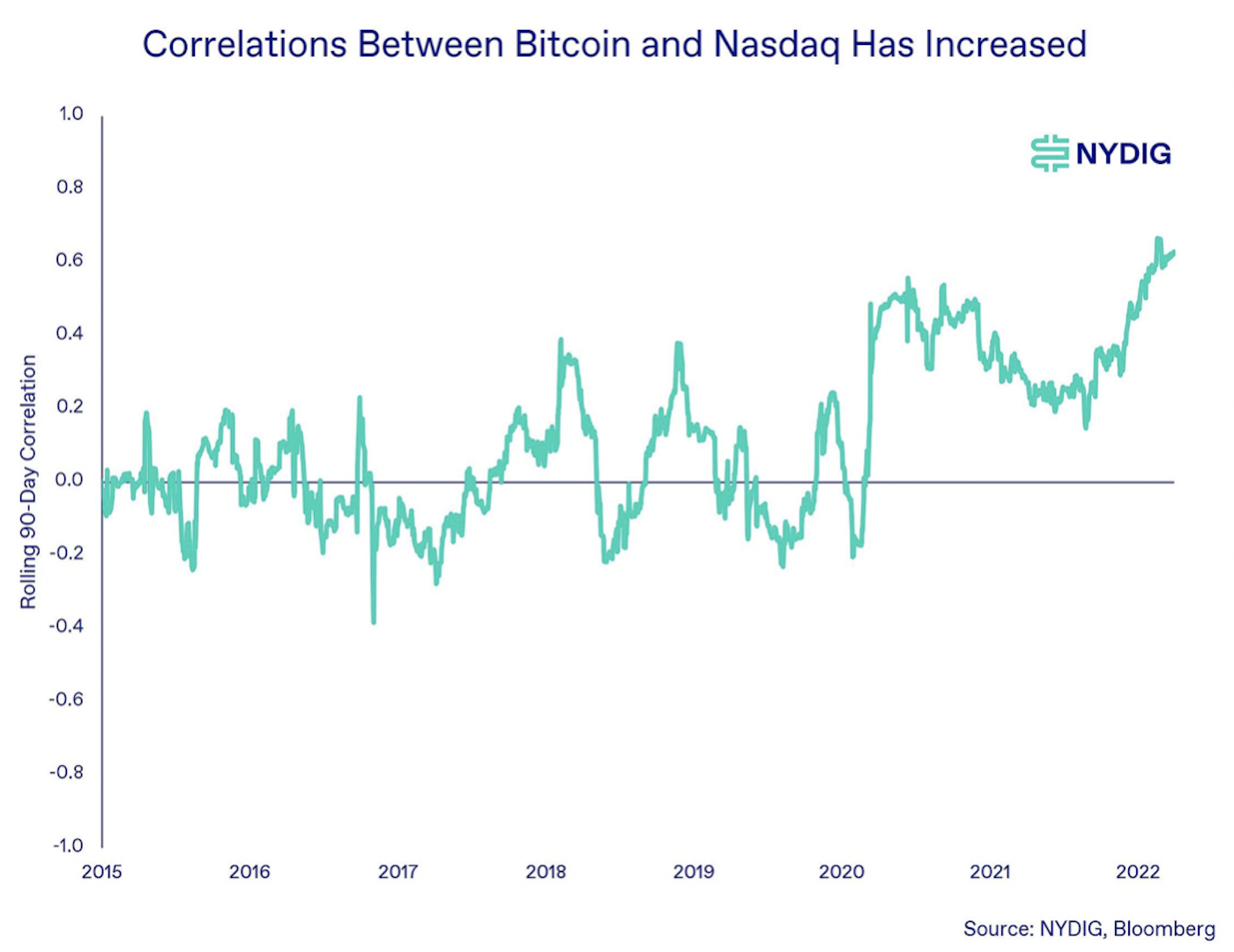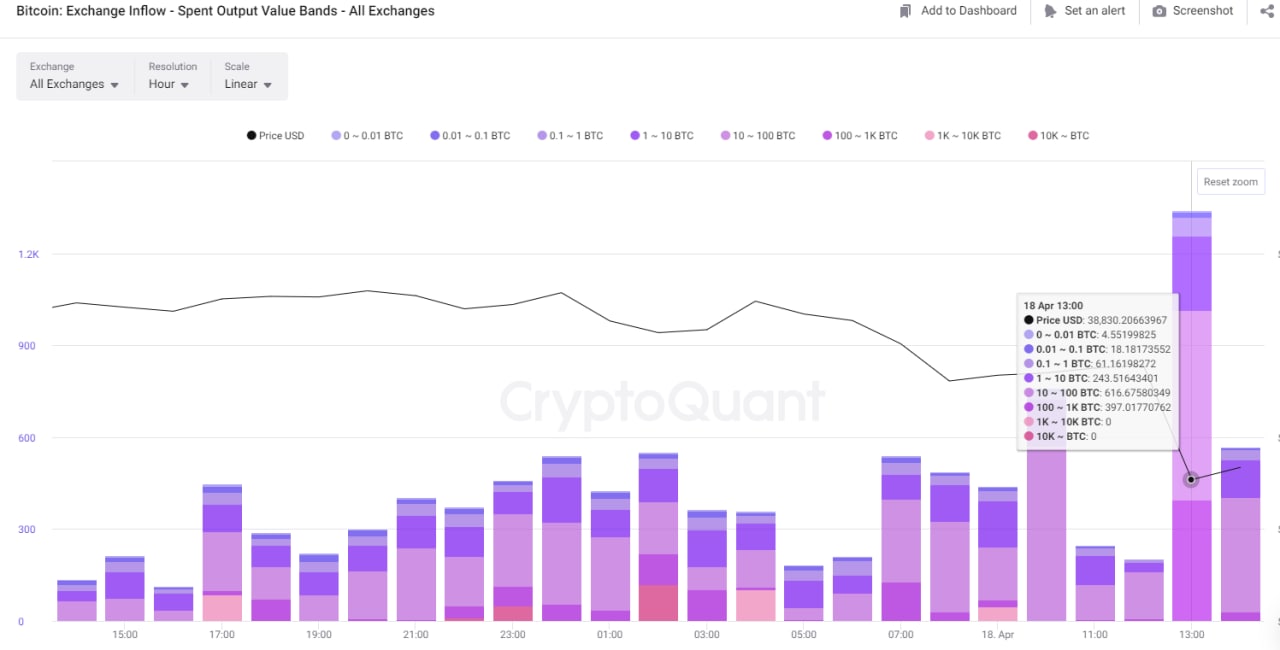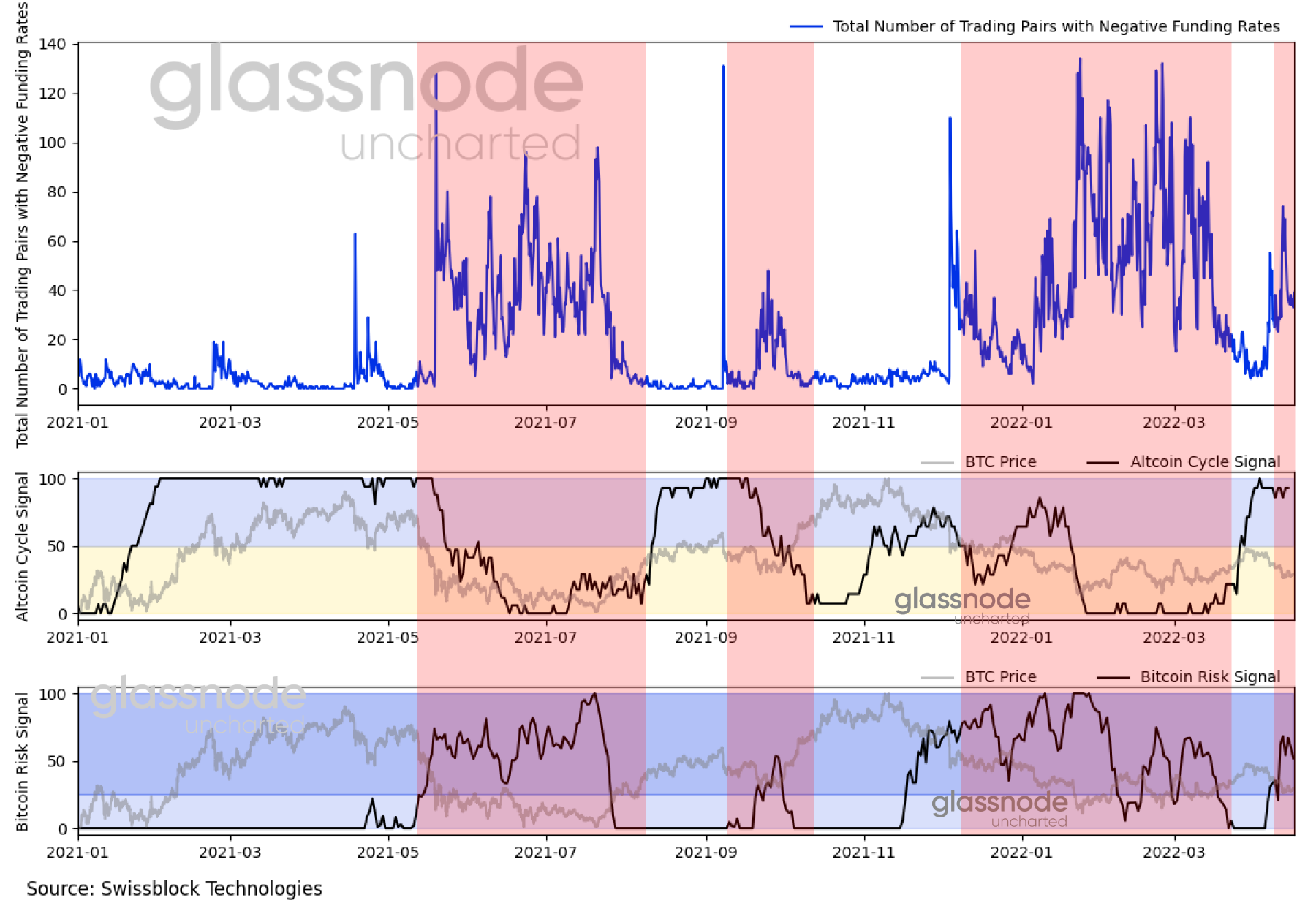Bitcoin Slips Below Support Level to $38.5K as US Tax Return Deadline Approaches

Tax-related selling seems to have aggravated macro-driven weakness in the bitcoin market.
Bitcoin (BTC) has breached critical price support to hit one-month lows as the U.S. tax season draws to a close.
The leading cryptocurrency by market value fell to $38,577 during the Asian hours, a level last seen on March 15, according to CoinDesk data. Per analytics firm IntoTheBlock, $40,000 was important support, as significant buying activity has happened around that level in the past. The latest decline means the cryptocurrency has lost over 17% since testing waters above $48,000 three weeks ago.
The weakness appears to have stemmed from tax-related selling and a murky macro environment. For U.S. investors, the deadline to submit 2021 tax returns or an extension to file and pay the tax is Monday, April 18, 2022. Last year, market players sold digital assets during the tax season, between Jan. 1 and April 15, Coinbase’s David Duong said in a recent weekly email.
“Tax-related selling has definitely played a role in recent weeks, Jeff Anderson, CIO at the quantitative trading firm and liquidity provider Folkvang Trading, said in a Telegram chat. “However, it’s difficult to say exactly how much of the weakness has been due to the impending tax deadline.”
Anderson added that “people were positioned for an end of tax selling Monday and the [continued rise] in yields has scuppered that.”
The U.S. 10-year Treasury yield rose to a 2.88% early on Monday, the highest level since December 2018, per data provided by charting platform TradingView. The nominal and real or inflation-adjusted U.S. bond yields have been on a tear in recent weeks, thanks to high inflation and the Federal Reserve’s (Fed) plans to deliver rapid-fire rate hikes. So, risk assets, including technology stocks and cryptocurrencies, have come under pressure.
According to George Liu, head of derivatives at Babel Finance, bitcoin’s strengthening correlation to stocks could be the more dominant reason behind the dip below $40,000.
“The tax issue has been known and anticipated in the markets already, so we don’t see that as a decisive factor for the current price dip,” Liu said. “Basically, the short-term correlation between bitcoin and U.S. stocks has reached a new peak.”
Crypto services provider Amber Group voiced a similar opinion, saying, “a lot has to do with the poor macro conditions… look at equities and Nasdaq [tech-heavy index] and the rise in the real yields.”
The rolling 90-day correlation between bitcoin and the Nasdaq Composite recently broke above 0.6, according to institutional bitcoin broker NYDIG.

Who is selling?
Blockchain data shows that the selling pressure is likely coming from short-term traders with significant holdings.
“Checking on the overall bitcoin network movement from spent output age band USD and spent output value band USD, it seems like the cohort most active during the price change seen a few hours ago was mostly 0~1 week aged coins + UTXO volume in 1M+ USD,” Chan Chung, head of marketing from Korea-based analytics firm CryptoQuant told CoinDesk in a Telegram chat.
The spent output age band is a set of all spent outputs created within a specified age band that flowed into exchange wallets. As Chung said, mostly 0-1 week aged coins were in action on Monday, meaning the selling pressure likely stemmed from short-term traders.
Further, the spent output value band, which shows the distribution of all spent outputs according to their value, shows most of the coins that moved into exchanges early today were from 10-100 BTC and 100 BTC and 1,000 BTC cohorts.

However, the data is subject to different interpretations; given blockchain metrics have their limitations. A whale can hold its stack in multiple addresses for years. “Whales might have split their wallet yesterday, which makes it look like 0~1 day UTXO; in reality, it could have been aged for more than three years,” Chung noted.
Bearish derivative market flows
Derivative traders seem to be positioning for an extended decline in bitcoin, as evidenced by the rising put-call skews, which measure the cost of puts relative to calls.
According to Babel’s Liu, open interest in the cash-margined perpetual futures market is increasing alongside the demand for downside hedging. In other words, traders appear to be betting on a downward move.
That could be the case as funding rates, or the cost of holding long or short positions in the perpetual futures market, have turned negative, according to data from Coinglass.com
“Selling pressure resurfaced in the perpetual market as bid transactions surpassed the ask side,” Glassnode’s Uncharted newsletter, dated April 17 said. “The number of perpetual contracts with negative funding rates increased, reinforcing the downward pressure.”
A negative funding rate implies that traders have a strong belief that the market is going down and that they are paying a cost to shorten it.

BY: Omkar Godbole
DISCLOSURE
The leader in news and information on cryptocurrency, digital assets and the future of money, CoinDesk is a media outlet that strives for the highest journalistic standards and abides by a strict set of editorial policies. CoinDesk is an independent operating subsidiary of Digital Currency Group, which invests in cryptocurrencies and blockchain startups. As part of their compensation, certain CoinDesk employees, including editorial employees, may receive exposure to DCG equity in the form of stock appreciation rights, which vest over a multi-year period. CoinDesk journalists are not allowed to purchase stock outright in DCG.










